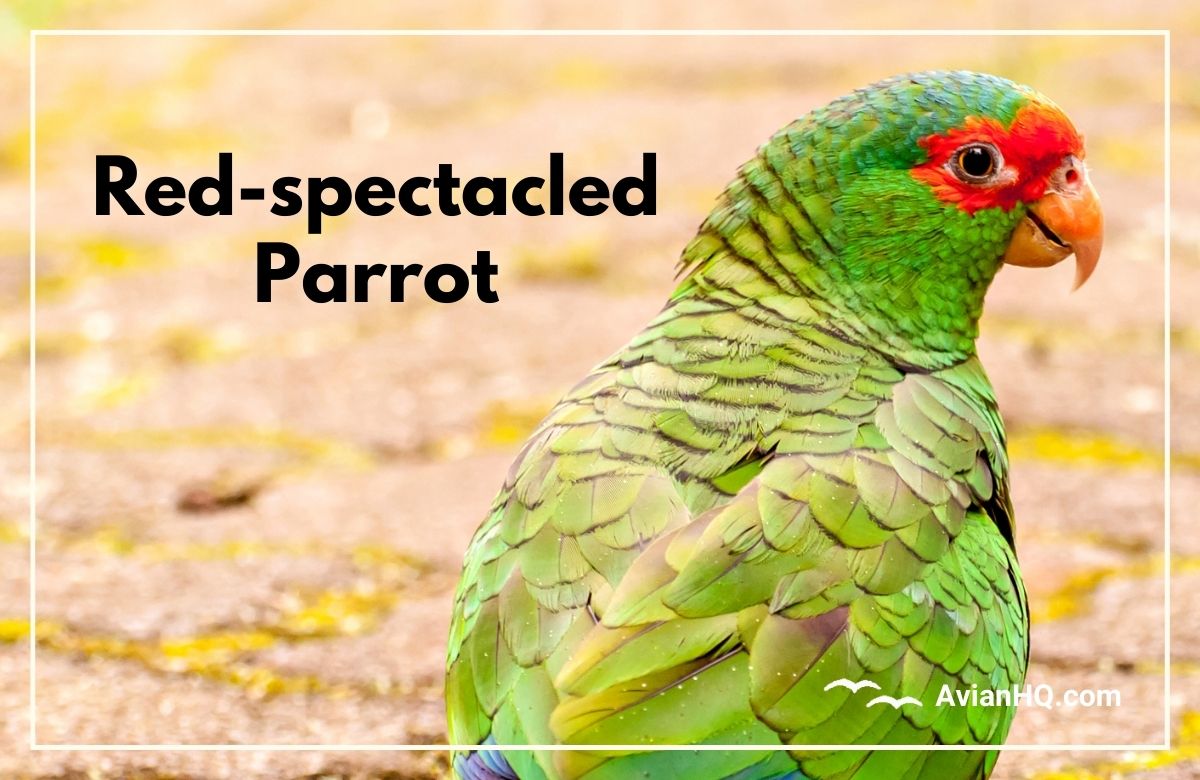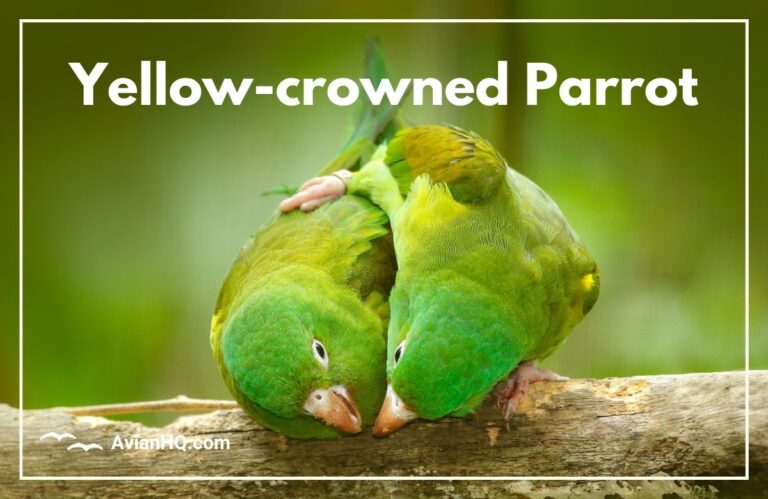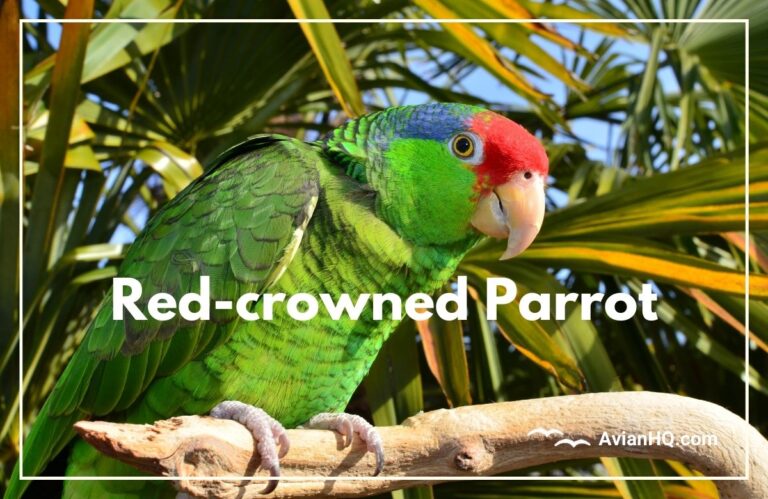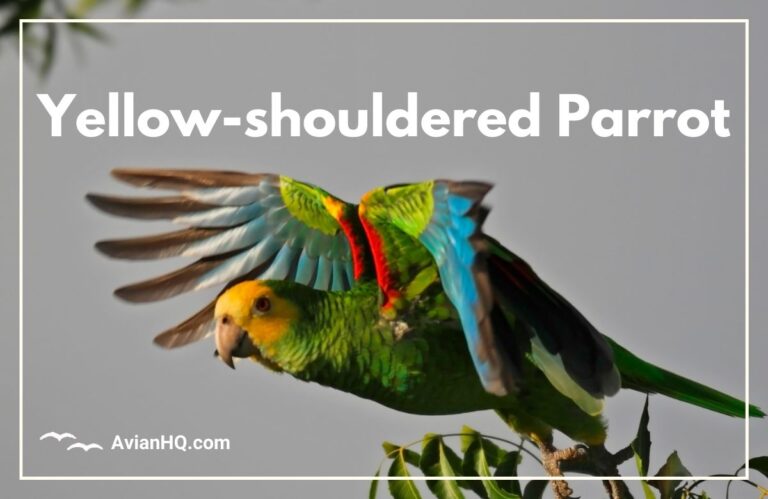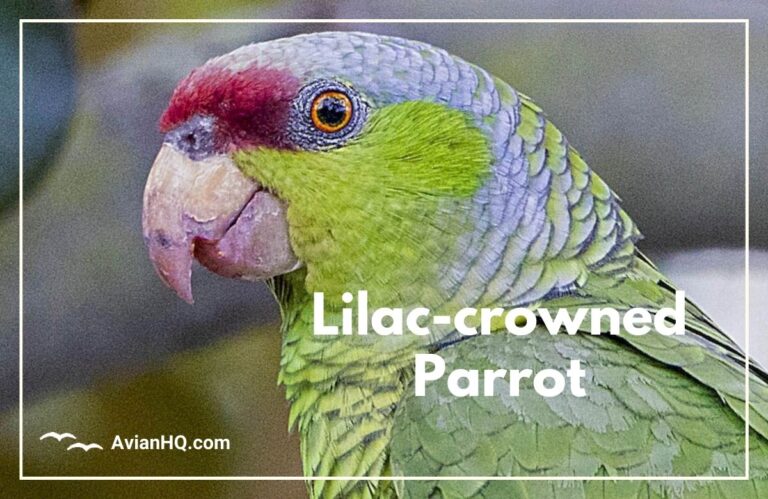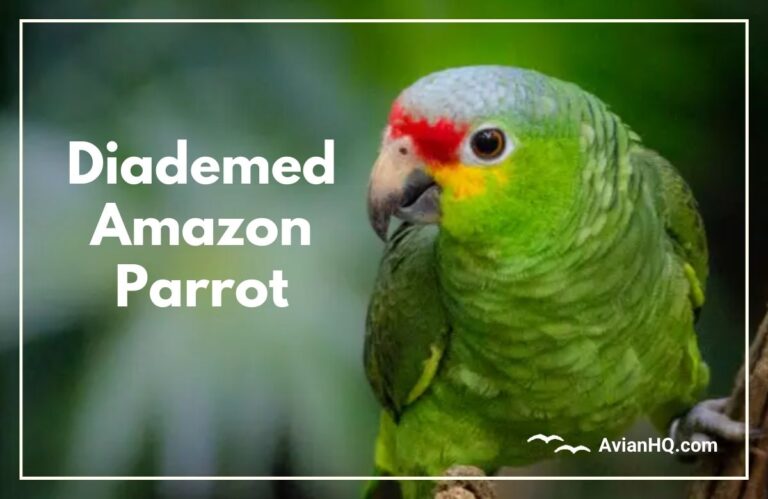Red-spectacled Amazon Parrot (Amazona pretrei)
As you explore the forests and woodlands of southeastern South America, keep an eye out overhead for a flash of red and green. If you’re lucky, you may spot the Red-spectacled Parrot (Amazona pretrei) flying from tree to tree or feeding on seeds and fruits. This striking parrot species has seen major declines due to habitat loss and trapping, but some populations still persist.
The Red-spectacled Parrot is named for the vibrant red feathers on its face and wings. Adults are mostly bright green, with red foreheads, eye rings, thighs, wing patches, and tail spots contrasting sharply. The wing and tail tips fade to blue and yellow-green. Females have less red overall.
Here’s an overview of the Red-spectacled Parrot:
| Description | Details |
|---|---|
| Scientific Name | Amazona pretrei |
| Average Size | 32 cm (12.5 in) long |
| Average Weight | 295 g (10.4 oz) |
| Wingspan | unknown |
| Conservation Status | Vulnerable |
This medium-sized parrot makes its home in the Araucaria moist forests of southeastern Brazil, ranging across Rio Grande do Sul, Santa Catarina, and Paraná. It may also migrate seasonally into bordering areas of Paraguay and Argentina. Red-spectacled Parrots roost and nest in cavities high on the trees.
As you’ll discover, the Red-spectacled Parrot plays an important role in its forest ecosystem. Read on to learn more about the natural history, conservation challenges, and outlook for this vivid South American parrot.
History and Taxonomy
The Red-spectacled Parrot was first described scientifically by French naturalist Coenraad Jacob Temminck in 1830, based on a specimen from Brazil. He named the species after French zoologist Alexandre Pretre.
Scientific Name and Meaning
The genus name Amazona refers to these parrots’ origin in the Amazon region of South America. The species name pretrei honors Alexandre Pretre.
This parrot has no recognized subspecies. Some taxonomists previously considered the Red-spectacled Parrot to be a subspecies of the White-fronted Parrot (Amazona albifrons) due to similarities in appearance. More recent research using DNA analysis and vocalizations has confirmed it to be a distinct species.
Distribution
The Red-spectacled Parrot is endemic to southeastern South America. It’s native range centers on southern Brazil, including Rio Grande do Sul, Santa Catarina, and Paraná states.
Smaller populations may also occur in border regions of northeastern Argentina (Misiones province) and extreme southeastern Paraguay. However, the full extent of its range outside Brazil remains unclear.
Physical Appearance
The Red-spectacled Parrot is a medium-sized bird measuring approximately 32 cm (12.5 in) long. Their plumage features bright green feathers accented with vibrant red markings.
Size and Weight
These compact parrots reach total lengths of about 31-33 cm (12.2-13.0 inches), including the tail. Their wings measure around 15.2 cm (6.0 inches).
Adults weigh an average of 295 grams (10.4 ounces), with females generally slightly smaller than males.
Plumage Colors and Markings
Adult birds appear predominantly bright green across the back, chest, wings, and tail. The forehead, area around the eyes (lores), thighs, bend of the wings, and wing edges show vivid scarlet-red feathers. The wing tips fade to a soft blue, while the outer tail feathers have yellow-green tips with red spots at the base.
The periophthalmic ring around the eye is white. Females have slightly less red coloring overall, especially on the wings. Juvenile birds have little red plumage apart from the forehead and around the eyes. The amount of red increases as they mature.
Bill, Eyes, Legs/Feet
Their bill is yellowish horn-colored. The irises of their eyes are orange-yellow, while the eyelids are white. Legs and feet range in color from pale grey to yellowish horn.
Habitat and Distribution
The Red-spectacled Parrot is endemic to the Atlantic Forest region of southeastern South America, primarily southern Brazil. It’s native habitat consists of Araucaria moist forests and woodlands dominated by Parana Pine (Araucaria angustifolia).
Native Range and Habitat
This parrot’s range centers on Rio Grande do Sul state in Brazil, where significant populations occur. It also inhabits forests further north in Santa Catarina and Paraná states.
Its total extent is estimated at less than 20,000 square miles (51,800 square km). Within this range, the Red-spectacled Parrot relies heavily on Araucaria trees for roosting and feeding. It prefers moist forests at elevations between 300–3,300 feet (100–1,000 meters).
Elevation Range
In the northern section of its range in Paraná and Santa Catarina states, these birds mainly inhabit higher altitude forests at elevations of 980-3,300 feet (300-1,000 m).
Further south in Rio Grande do Sul, they also utilize lowland dry forests and savannas at lower elevations down to around 300 feet (100 m).
Seasonal Migration
During winter months, Red-spectacled Parrots may migrate short distances south and east following seed crops into border regions of Argentina and Paraguay. However, these movements are poorly documented.
Diet and Feeding
In the wild, Red-spectacled Parrots feed almost exclusively on seeds and fruits, especially those of native Araucaria and podocarp trees. Their diet varies somewhat across seasons and locations.
Overview of Diet
The bulk of these parrots’ intake consists of large seeds from conifer cones and nut-like fruits. They supplement this with smaller seeds, berries, and some flower nectar. Overall their diet is about 90% vegetable matter from native trees.
Types of Foods Consumed
Important food sources include:
- Seeds of Parana pine (Araucaria angustifolia)
- Seeds of Parana pine (Podocarpus lambertii)
- Fruits of Eugenia, Campomanesia, Melia trees
- Berries from various Myrtaceae family trees
- Some nectar from Erythrina and Tabebuia flowers
Feeding Behaviors
Red-spectacled Parrots usually forage for food in small groups or pairs. At times, larger flocks of 100-150 birds will congregate in areas with abundant fruit or seed crops. They often fly long distances of 12-60 miles (20-100 km) daily while feeding.
Breeding and Reproduction
The breeding season for Red-spectacled Parrots falls between September and December. They nest in tree cavities, with females laying clutches of 3-4 eggs.
Nesting Sites
Breeding pairs seek out tree hollows in tall mature trees for nesting sites. Favored nest trees include species in the Lauraceae family like Nectandra, Ocotea, and Persea. The female alone prepares the nest cavity with a bed of wood chips.
Nest holes are generally high up around 32-65 feet (10-20 meters) above ground. The inner depth averages around 20 inches (50 cm).
Clutch Size
Clutch size is typically 3-4 white eggs. The eggs measure roughly 1.3 x 1.0 inches (34 x 26 mm) and weigh about 0.3 ounces (9 grams) each. The female develops an incubation patch on her belly before laying.
Incubation and Fledging
Only the female incubates the eggs, for a period of 26-28 days. The altricial chicks hatch blind and mostly naked. They fledge at 7-8 weeks old, but remain dependent on parental care for some time after leaving the nest.
Behavior and Ecology
Red-spectacled Parrots demonstrate some unique behaviors and complex ecological roles where they occur. Their social dynamics and movements reflect seasonal changes in food availability.
Flock Sizes
During the breeding season, Red-spectacled Parrots are solitary or occur in pairs defending nesting territories. But in the non-breeding months, they gather in large flocks from 30 up to 100-150 birds for roosting and foraging.
Roosting Patterns
Huge communal roosts form in trees near croplands or fruiting native trees. Hundreds of parrots may congregate at dusk, engaging in noisy pre-roosting displays. Their presence indicates abundance of locally available foods.
Foraging and Feeding
Small flocks of five to twenty birds forage together for widely dispersed foods during the day. Their movements may exceed 60 miles (100 km) in a single day as they track ripening of seeds and fruits across the landscape.
Interactions with Other Species
This parrot’s far-ranging habits contribute to seed dispersal for various trees. Their need for tree cavities, though, can compete with housing demands of other animal species in Araucaria forests. Overall the Red-spectacled Parrot fills an important ecological niche across parts of southern Brazil.
Conservation Status
Due to ongoing habitat destruction and poaching, the Red-spectacled Parrot is considered a threatened species. It’s population numbers have decreased sharply from historical levels.
IUCN Status
The IUCN Red List classifies the Red-spectacled Parrot as Vulnerable. This means it faces a high risk of endangerment in the wild.
Population Estimates and Trends
Current worldwide population is uncertain but likely less than 20,000 mature adults and declining. One estimate placed total numbers at only 5,000-15,000 birds in 1994. More surveys are needed for an accurate assessment.
Major Threats
The main threat is accelerating deforestation, which destroys nesting and feeding habitat. Logging for timber and firewood has greatly reduced extent of Araucaria forests.
Trapping of wild parrots for illegal pet trade also remains an issue. An estimated 400-500 chicks may be poached annually.
Protection Efforts
Brazil has banned export of trapped wildlife. Some reserves aim to preserve sections of vulnerable Araucaria forest. But more habitat conservation initiatives are urgently needed to ensure this parrot’s future survival.
Conclusion
The vibrant Red-spectacled Parrot plays a unique ecological role in the Araucaria forests of southern Brazil. But habitat loss and trapping pressures have caused its population to decline to fewer than 20,000 mature adults.
With its bright red and green plumage, this parrot is hard to miss where it still occurs. Flocks chatter loudly and engage in raucous displays at communal roosts. Yet Red-spectacled Parrots need extensive old-growth forest to support successful breeding and foraging.
Ongoing deforestation across Brazil’s Atlantic Forest region has greatly reduced suitable habitat. Much of the tree cover has vanished over the last several decades. At the same time, many chicks are poached illegally from nests each year to supply consumer demand for exotic pets.
Protected reserves aim to conserve sections of the mammal-rich Araucaria forest ecosystem. But more initiatives are desperately needed to preserve adequate habitat and restrict unsustainable trapping levels. Unless current threats can be reversed, the outlook remains uncertain for the Red-spectacled Parrot’s long-term survival.
With proper habitat protections and enforcement of wildlife laws, this amazingly adapted parrot species could perhaps recover from its present precarious state. The red spectacles and jewel-toned wings of this charismatic bird still brighten the forests today. But conservation action must be taken now to ensure future generations also have a chance to see it in the wild.

